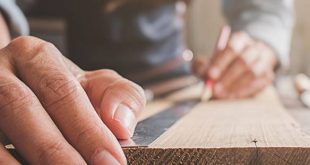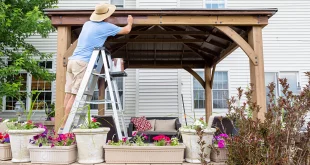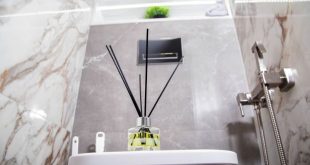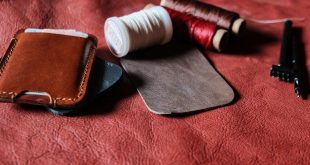Did you know that the average U.S. home contains a whopping 300,000 items?
That’s a lot of stuff, and most of it — like discarded electronics and clothes — you likely don’t need.
Here’s another question: In that pile of stuff you have at home, how many are household tools?
If you’re not sure, then it’s possible you often call a service professional, say a plumber, for repairs. Now, hiring a plumber in the U.S. can cost between $175 to $450. Some plumbers even have a flat rate of about $300.
But if only you had a wrench, you could have tightened all those leaky faucets in no time and cost to you at all! You could’ve otherwise saved a lot of dough if you had basic home tools.
That said, now’s the best time to start building your DIY repair toolkit. We’ve listed the top must-have tools for a homeowner here, so be sure to keep reading!
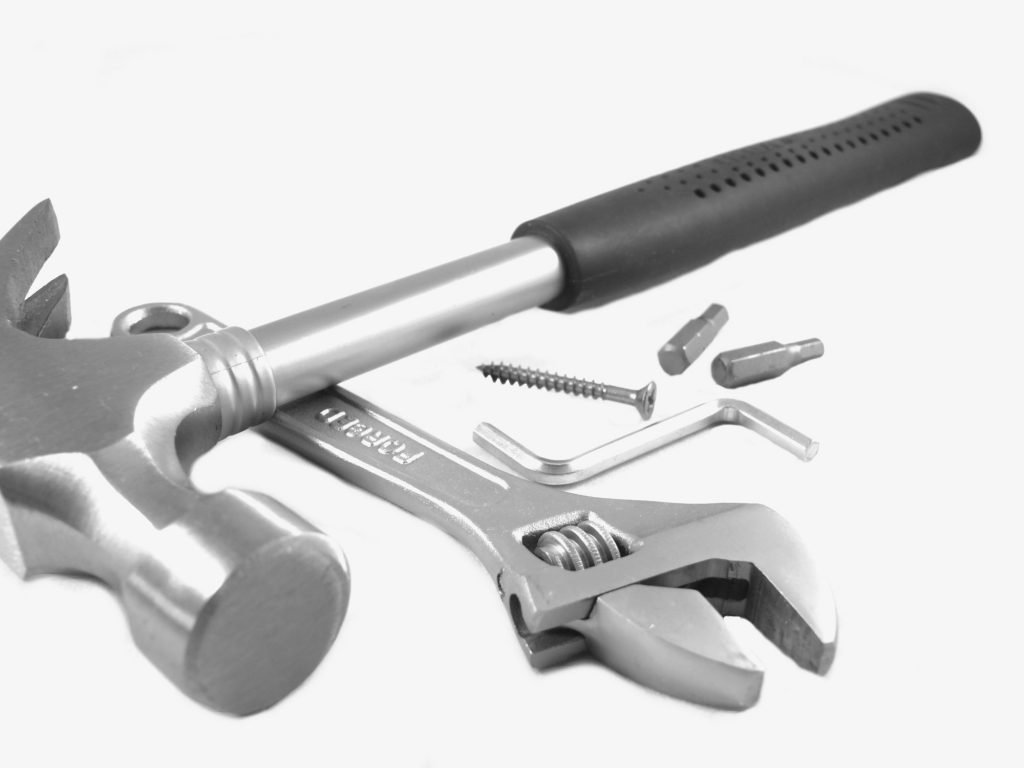
-
Adjustable Wrench
We’ll start off with this one since we used it for our example above.
As the name suggests, you can adjust the clamping jaw of an adjustable wrench. Also known as crescent wrenches, you can use these to tighten various sizes of bolts and nuts, such as in faucets. You’ll also need these to secure bolts and nuts in cars, bicycles, and pipework.
-
Open-End Wrenches
Open-end wrenches are often available in kits since each of their two ends can only fit a specific bolt or nut size.
With an open-end wrench, you use the U-shaped ends to clamp and tighten bolts or nuts. These come in smaller sizes than adjustable wrenches. That makes them great for working on projects in cramped areas or spaces.
-
Combination Wrenches
As for a combination wrench, you get one U-shaped end, with the other being a box-end. The box-end side looks like a ring, which you use for a firmer grip on nuts and bolts.
Like open-end wrenches, combination wrenches also come in kits. You’ll find kits that include all three types of wrenches in differing sizes too. Consider getting one of these if you plan to do a lot of DIY repair or artsy projects.
-
Flat-Head or Slotted Screwdrivers
Flat head screwdrivers do more than making paint lids easy to pry — you need them for electrical work too. These are often used for replacing old plates that cover outlets and switches. These screwdrivers help ensure you don’t over-tighten the screws on the plate covers.
Flat-head screws are also found in many furniture pieces, such as frameless cabinets. If you want to repair or make your own home furnishings, you need a flat-head screwdriver.
-
Phillips Screwdrivers
Phillips screws are screws with a “+” on a head that curves outward. These are more common tools used in construction work and woodworking projects. That’s because they allow a tighter, stronger connection than the flat head ones.
A manual Phillips screwdriver is fine for basic repairs like a doorknob replacement. You can also use this to replace the frames of your lighting systems, including bulbs and lamps.
But if you’re thinking of taking on bigger projects, like repurposing your baby’s crib, opt for a power drill. It’s more expensive, but you’ll use it for most home renovation projects.
Remember, the bigger the construction project, the more Phillips screws involved. Using a manual screwdriver will eat up a lot of your time.
-
Hex Key Screwdrivers
Some doorknobs and most faucet handles have screws that come with a hexagonal socket. To repair or replace these, you need a hex key screwdriver or Allen screwdriver. You know you’re looking at a hex-key screwdriver because they’re L- or T-shaped.
These screwdrivers are best for installing small fixtures, such as space-saving towel bars.
-
A Power Drill
A power drill is one of the best household and furniture tools you should invest in, as it can save you a lot of time. It allows you to drill or make holes in materials like wood, plastic, and even metal. It also lets you turn screws much faster than manual screwdrivers.
A power drill is more ideal for bigger projects, like making your own shipping container home. If you’ll make your own kitchen cabinetry, shelving, or countertops, you’ll need this too.
Power drills come in corded (electricity-powered), cordless (battery-powered), and pneumatic versions.
-
Nail Gun
Did you know that non-power hand tools have caused up to four times more injuries than powered tools?
That’s right!
One study found that manual tools caused 101,095 injuries. Powered ones still resulted in many injuries, but only in 28,304 cases.
Also, note that this was a 1988 study. Back then, powered tools weren’t as safe as they are today. With proper training and personal protective gear, you can use a nail gun to say goodbye to your hammer.
Nail guns have replaced traditional hammers because they’re faster, more efficient, and safer. They also make a lot less noise, compared to the pounding of a hand-driven hammer.
If you want to get a new floor for your home, you definitely should get a nail gun to finish the project faster. There are many types of nail guns, but the most common among homeowners is the pneumatic kind.
-
An Air Compressor
Speaking of pneumatic nail guns, you’d need an air compressor for that. It’s a type of power tool that generates pressurized air and moves it with great force. You used to only find these in construction sites and car repair shops, but you can now get one for your home too.
Air compressors also power many of the other listed tools here, like sanders and drills. These devices can even pump compressed air into pneumatic HVAC systems.
If you have a flat car tire, you can use this machine to fix it. In fact, you can use it for bike tires and other inflatables like a football or a basketball.
Air compressors have creative uses too — you can use them to blow up balloons for your kid’s birthday party. You can even make your own snow using this air-pumping machine.
-
A Sander
A sander is the powered version of sandpaper. Some of these machines use sandpaper for surface preparation, and they’re the cheapest. But if you want a neater, smoother finish, choose a sander that uses other abrasives.
Sanding is crucial to surface preparation, especially for woodwork and furniture making. You also need to sand items before painting or finishing their surfaces.
Sanding is also a must for projects that involve material adherence, such as decals. Surface preparation is also crucial for removing rust on metals, like your water tank.
-
A Tape Measure
To ensure your furniture pieces are of the right measurement, you need a tape measure. You also need this to get the right length, width, and height of larger items, like wallpaper and wood. It also makes measuring the distance, say between one end of your porch to the other, easier.
Most tape measures come in 12-feet length, which can be good enough for DIYers. But you can also get them in 25-feet, 50-feet, and 100-feet increments.
-
A Level
Using a level is the only sure way to get true horizontal and vertical. It makes certain that surfaces and standing heights are 100% straight.
Let’s say you want to make your very own dining table. You need a level to ensure that the legs are completely straight. Once the table is standing, the level will tell you if the table top is straight and not dipping to the right or left.
-
Pliers
Pliers have opposing jaws that provide gripping, bending, and even cutting power. You can use these to tighten or loosen bolts and nuts, stabilize an object, or remove nails. This is also the tool you use to bend or straighten wires and even bike spokes.
-
A Wire Cutter
Although you can use standard pliers to strip wires, it can be too powerful that you end up slicing the wires. That’s why it’s better to have a wire cutter, which is specifically for cutting and stripping wires.
-
Personal Protective Gear
Every year, accidental injuries land some 41.6 million Americans in emergency departments. Many of these resulted from falls, poisoning, and choking. But many others were from the incorrect use of house tools.
You can prevent such risks by making sure you dress right for your DIY projects. Invest in safety glasses, gloves, and a face or dust mask. These will help protect you, especially your eyes, from flying debris.
A dust mask also keeps you from inhaling debris, like sawdust, as you do your woodworking projects. It also acts as a barrier from any flying objects that may hit your face and cause punctures or lacerations.
Use electrical safety gloves whenever fixing anything that runs on electricity. Actually, you should turn off the main power supply before doing these projects.
Become a DIY Master with these Household Tools
DIY construction and repair jobs are more than a way to cut home maintenance costs. Finishing these projects also give you a sense of accomplishment and pride. Only a few things can be as satisfying as hearing praises for that bathroom shelf you built with your own hands.
So, start getting these household tools as soon as you can! The sooner you do, the sooner you can make basic repairs and renovations around the house.
Speaking of renovations, have you thought about improving your bathroom? If so, then be sure to check our ultimate guide on updating a bathroom on a budget!
 World inside pictures Collect and share the best ideas that make our life easier
World inside pictures Collect and share the best ideas that make our life easier
